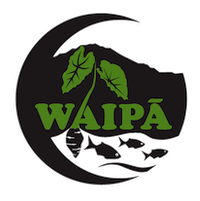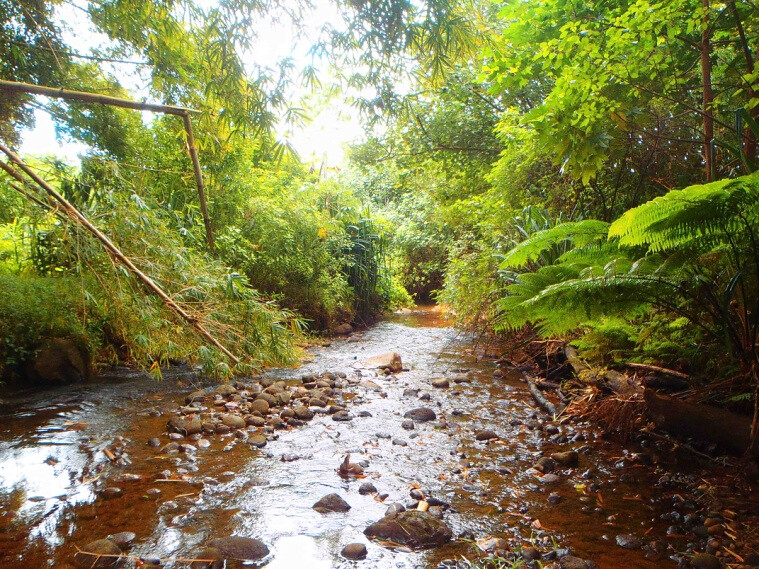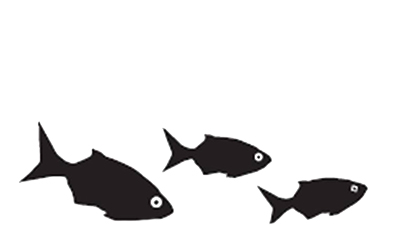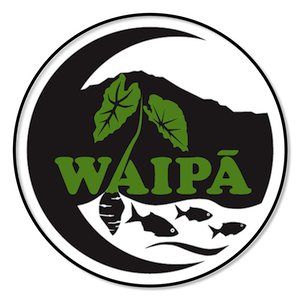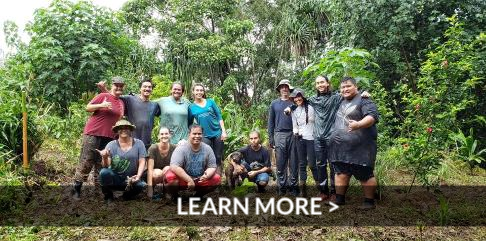NEWS
Waipā
Waipā Stream Restoration Flows Forward
In 2011 we started an exciting new project at Waipā to restore a section of Waipā Stream that had become blocked with dense stands of hau bush over many years. The hau bush had grown into the stream causing sediment and plant debris to fill up the stream channel. This created an obstacle for migrating native fish and prawns that have to pass through this section of Waipā Stream during spawning season. The Waipā Stream Restoration Project was designed to remove barriers to fish passage and enhance habitat for native aquatic species in Waipā Stream. It is also serving to enhance wetland and riparian areas along the stream that are important habitat for endangered native waterbirds (such as the Nene goose and Koloa duck) and the Hawaiian Hoary Bat.
As of March 2012, approximately 1.5 acres of hau bush have been cleared along one side of Waipā Stream and used to create mulch which was then spread across the clearing area. Outplanting of the cleared area with native Hawaiian and canoe plants began in July 2012 and is ongoing. An additional 1.75 acres near the blocked section of the stream has been cleared of hau bush, but further treatment of this area is needed before the outplanting effort can begin here. Approximately 600 feet of the stream channel has been cleaned of hau debris; this means that the primary barrier to fish passage in the stream has been removed. During the summer of 2012, an additional 2-3 acres of hau bush will be removed on the opposite side of the stream from the 2011 work area.
An important element of the Waipā Stream Restoration Project is monitoring the impacts of the restoration work on the stream’s water quality and aquatic life. To this end, monitoring programs have been established to regularly measure streamflow rates and water quality parameters at various points along the stream. Also, net surveys are being performed in the Waipā Stream Estuary and snorkel surveys are being conducted in the stream at several sites to collect data about habitat quality and habitat use by native and non-native species. Two interns funded by AmeriCorps and the Hawaii Youth Conservation Corps have been important in carrying out the project’s monitoring programs.
Funding for the project is being provided by the Hawaii Community Foundation, The National Oceanographic and Atmospheric Administration (NOAA) and the US Fish and Wildlife Service (USFWS). Matching funds are being provided by Kamehameha Schools and The Waipā Foundation. Volunteer efforts on this project are important to its long-term success. If you would like to volunteer on this project please contact the project manager, Matt Rosener at laminarmatt@gmail.com or call Waipa at 826-9969.
